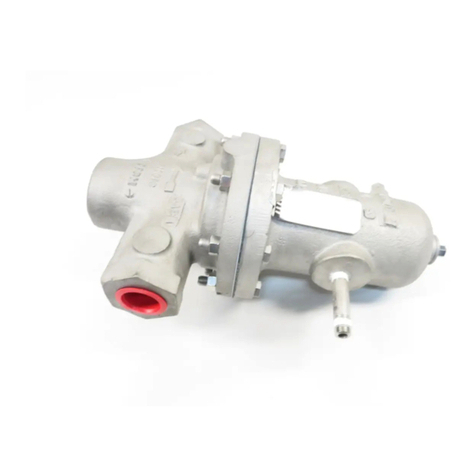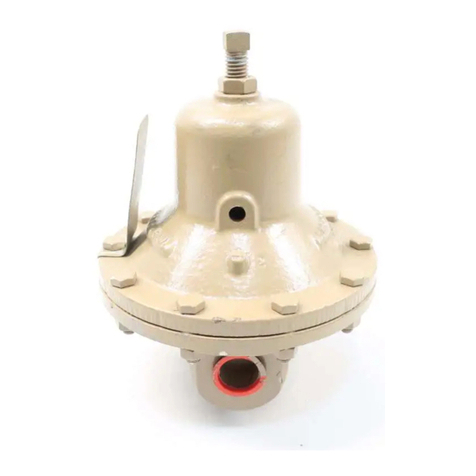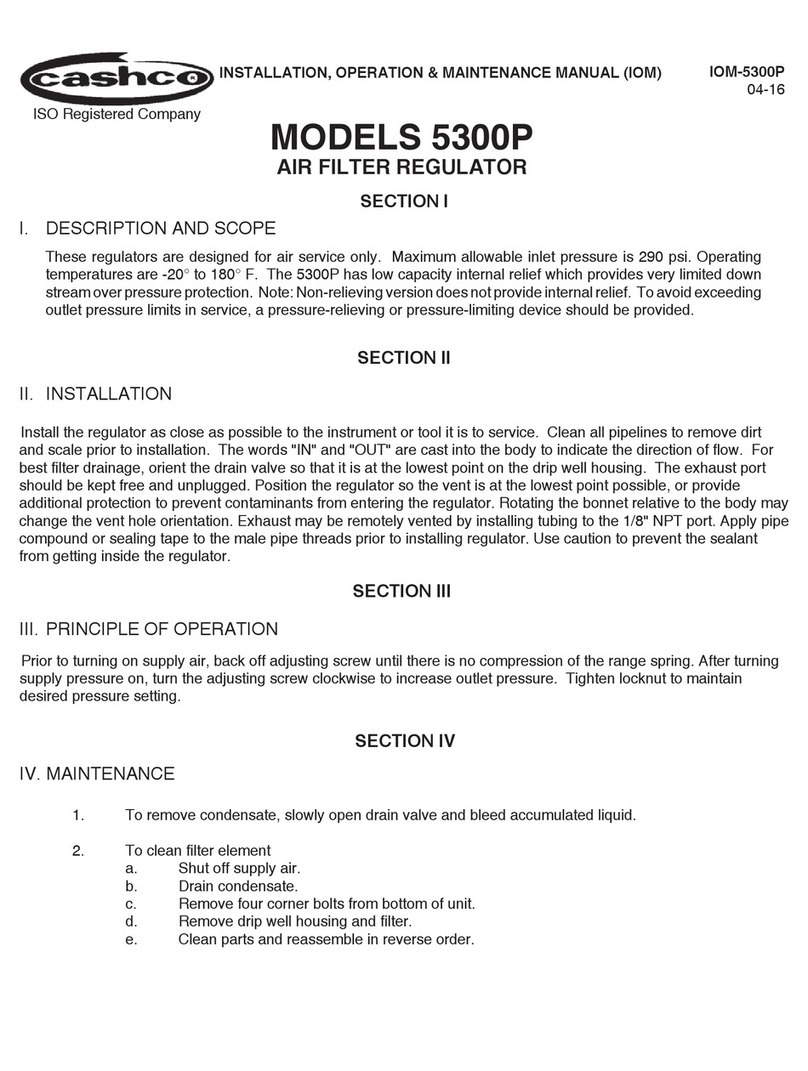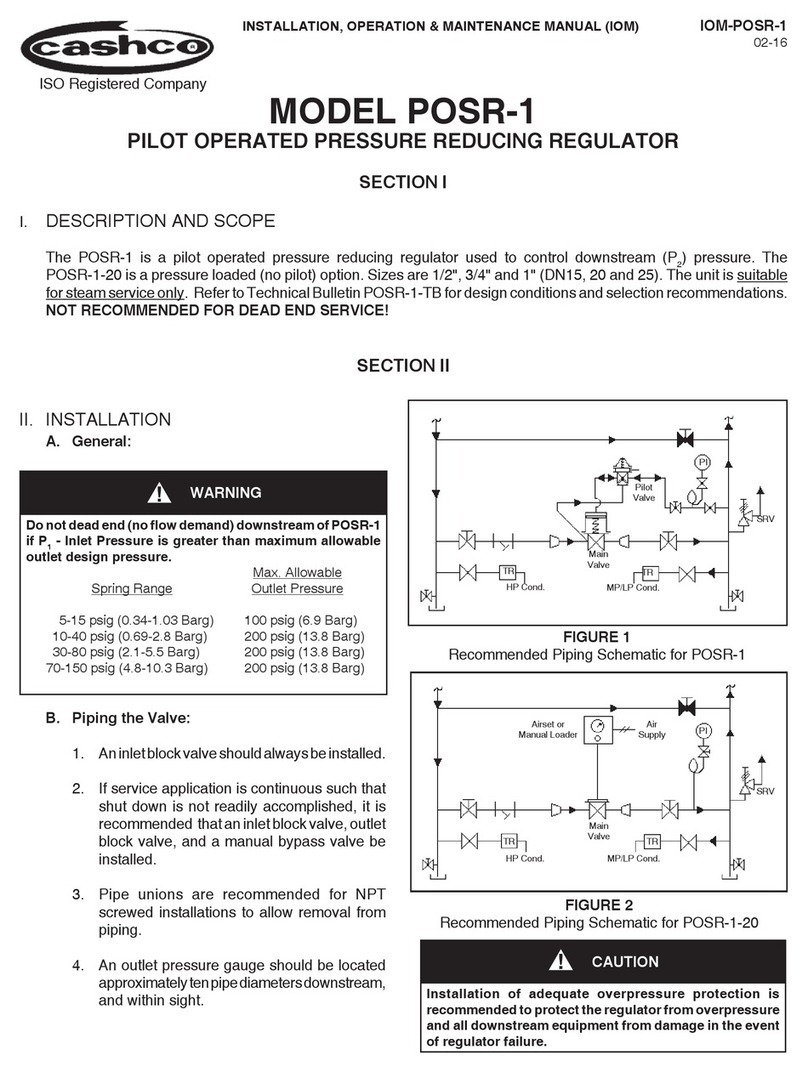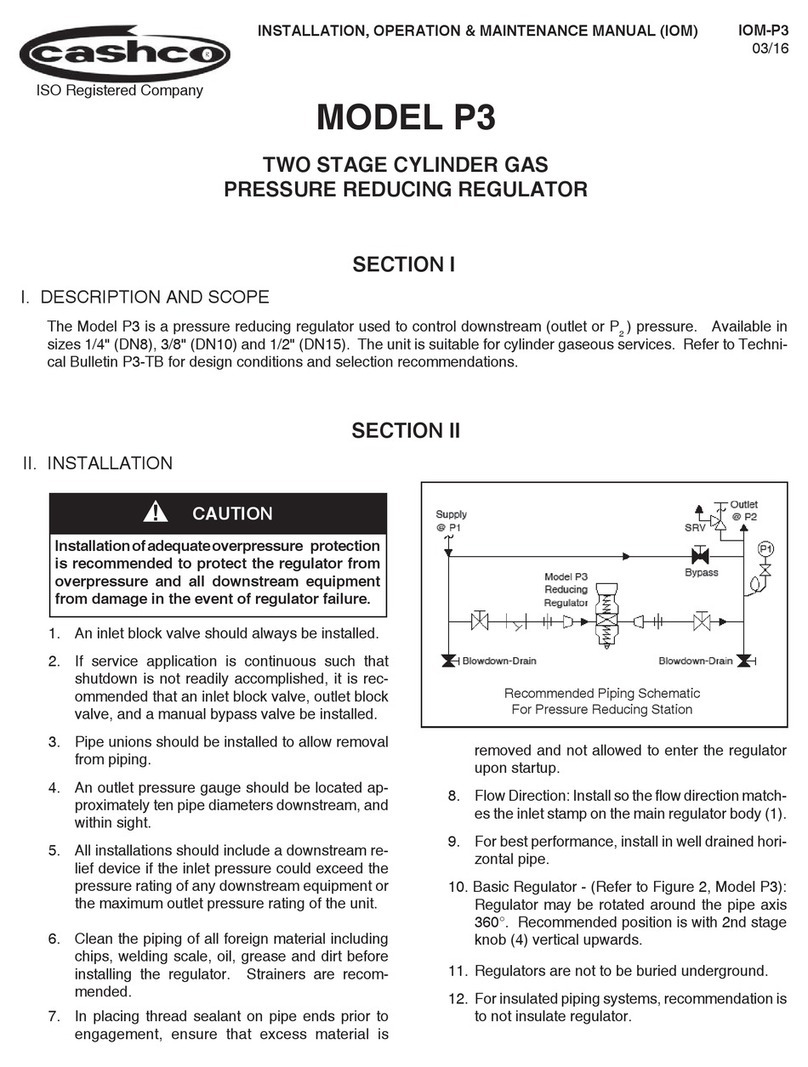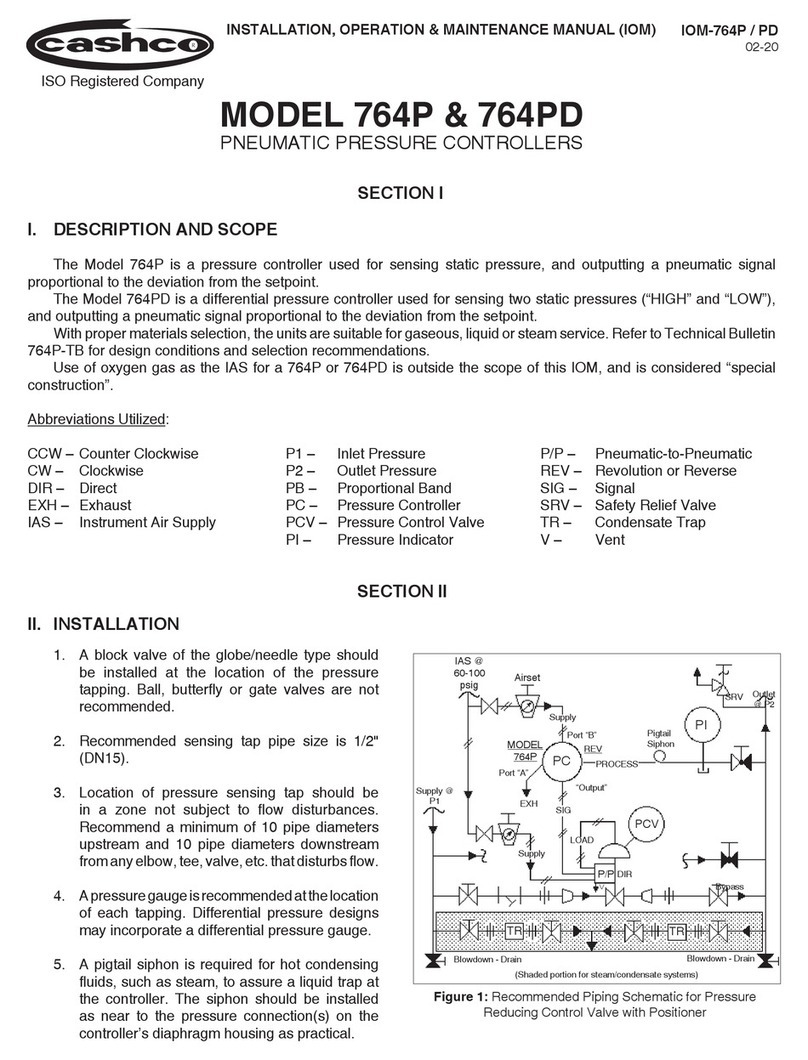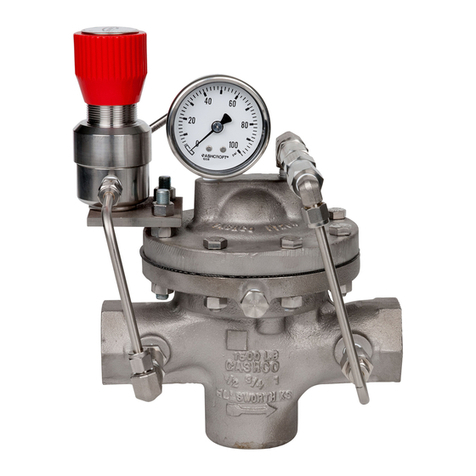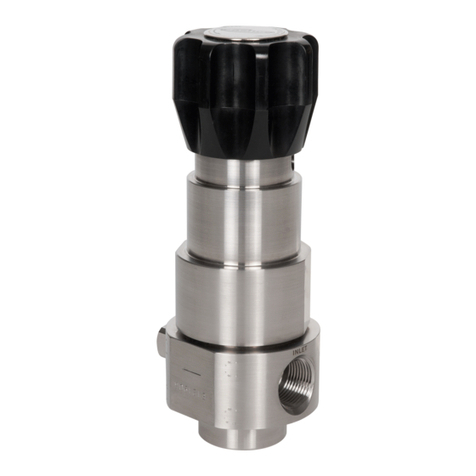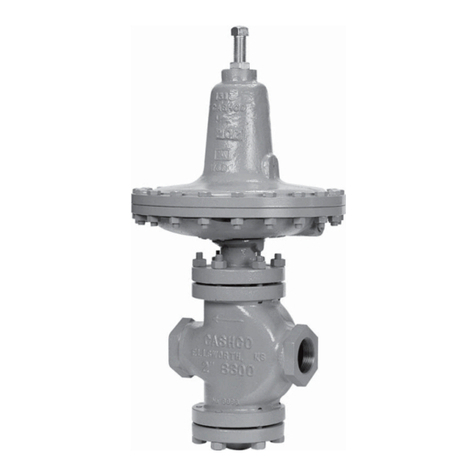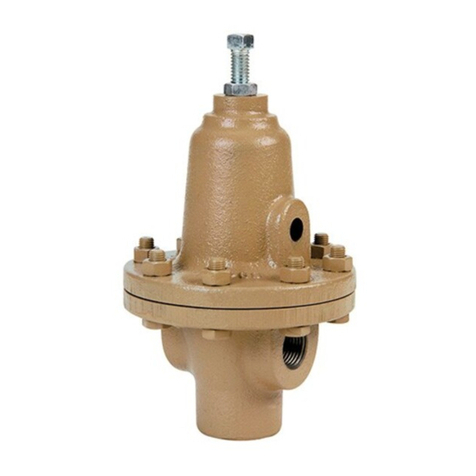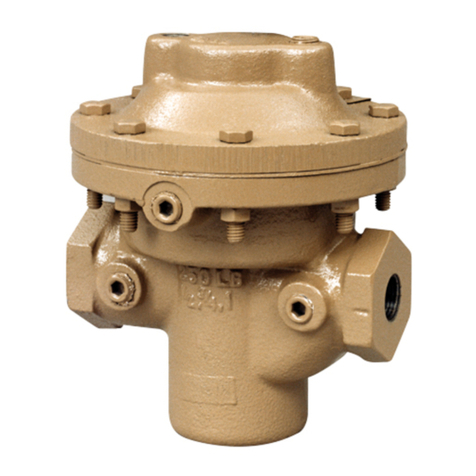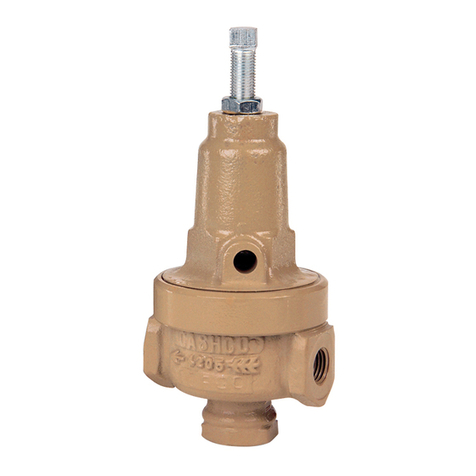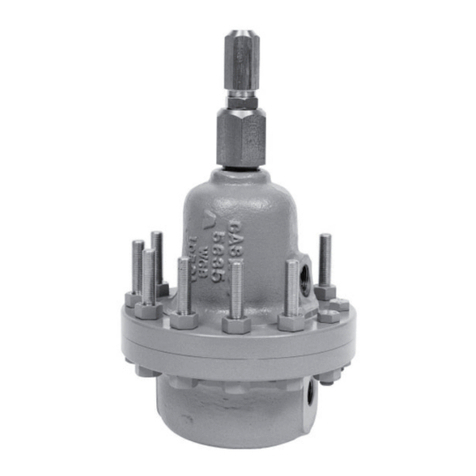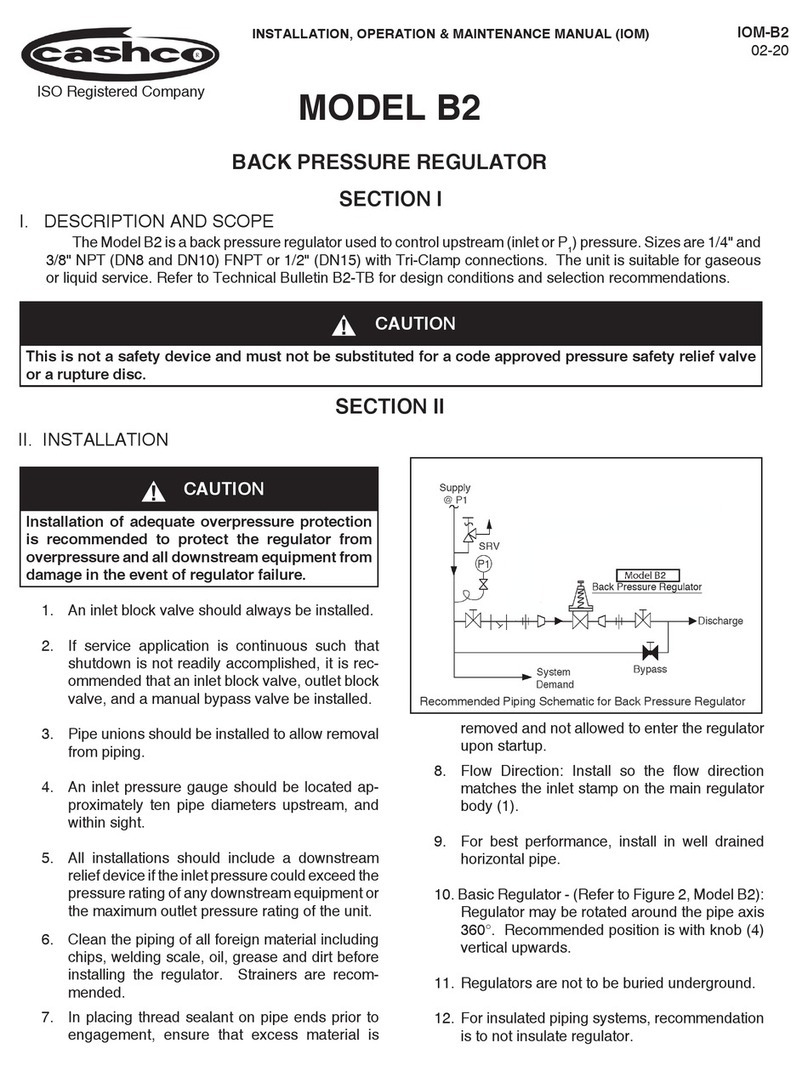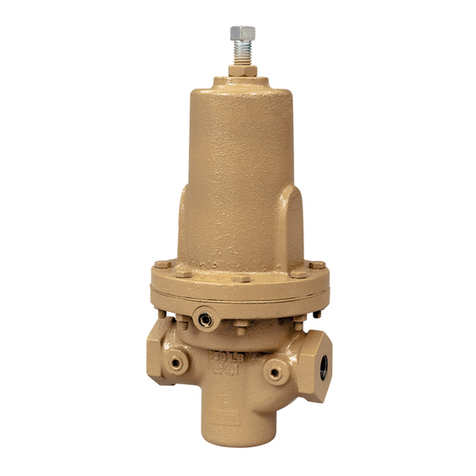
IOM-BQ2
a. Recommended installation is with the spring chamber
directed upwards.
b. No corrosive fluid should be utilized for spring cham-
ber loading.
c. System operation should ensure that loading pres-
sure (PLOAD) not exceed inlet pressure (P1); internal
diaphragm damage may occur if this operational
mode occurs.
11. Regulators are not to be direct buried underground.
12. For insulated piping systems, recommendation is to not
insulate regulator.
13. Spring Chamber Vent Tap - Option -25: Pipe spring
chamber vent opening to remote location. Orient so as
not to take on rainwater.
10a. Basic Regulator - (Refer to Figure 1): Regulator may
be rotated around the pipe axis 360°. Recommended
positions are with the spring chamber vertical upwards,
or horizontal. Orient such that the spring chamber vent
hole does not collect rainwater or debris.
10b. Cryogenic Regulator - Option -5 or -36 (Figure 2):
a. Recommended installation is with spring chamber
hanging directly below the body in a vertical down-
wards orientation. Allow water to drain; i.e. melting
frost, rain water.
b. Recommend inert purge gas to spring chamber
through vent hole and out drain hole.
10c. Differential Regulator - Option -1+6 (Refer to Figure 3).
7. Slowly open the outlet (downstream) block valve ob-
serving the inlet (upstream) pressure gauge. Determine
if the regulator is flowing. If not, slowly rotate the regula-
tor adjusting screw counterclockwise (CCW) until flow
begins.
8. Continue to slowly open the outlet (downstream) block
valve until fully open.
9. Observing the inlet (upstream) pressure gauge, rotate
the adjusting screw clockwise (CW) slowly until the inlet
pressure begins to rise. Rotate CW until the desired
setpoint is reached.
10. Continue to slowly open the inlet (upstream) block valve.
If the inlet (upstream) pressure exceeds the desired
setpoint pressure, rotate the adjusting screw (CCW)
until the pressure decreases.
11. When flow is established steady enough that both the
outlet and inlet block valves are fully open, begin to
slowly close the bypass valve if installed.
12. Develop system flow to a level near its expected normal
rate, and reset the regulator setpoint by turning the
adjusting screw CW to increase inlet pressure, or CCW
to reduce inlet pressure.
13. Reduce system flow to a minimum level and observe
setpoint. Inlet pressure will rise from the setpoint of Step
9. (Ensure that this rise does not exceed the stated upper
limit of the range spring by greater than 50% i.e. 30-80
psig (2.07 - 5.52 Barg) range spring, at maximum flow
the inlet pressure should not exceed 1.5 x 80 (5.6 Barg)
or 120 psig (8.3 Barg). If it does, consult factory.)
14. Increase flow to maximum level if possible. Inlet (up-
stream or P1) pressure should rise. Readjust setpoint
as necessary at the normal flow rate.
IV. STARTUP
*NOTE:Systemssequencingoperationsatstartup,normalopera-
tion, failure mode(s), and shutdown must assure that the pressure
(PLoad) on the spring chamber does not exceed the pressure regis-
tering on the wetted side of the diaphragm. Should this "pressure
reversal" occur, particularly to metal diaphragms, the diaphragm
may be permanently damaged and cause improper operation.
P1> PLoad
Pressure reversal is normally caused by the inlet pressure
to a regulator being interrupted (automatically or manually).
1. Ensure that the proper range spring is indicated to be
within the regulator by inspection of the unit's nameplate.
Apply setpoint pressures that are only within the stated
range.
2. When stating direction of rotation of the adjustment screw,
the view is with respect to looking down towards the
adjusting screw or its normal location.
3. Start with the block valves closed.Abypass valve may be
used to maintain inlet pressure in the upstream system
without changing the following steps.
4. Remove closing cap, if installed. Relax the range spring
by turning the adjusting screw counterclockwise (CCW)
a minimum of three (3) full revolutions. This reduces the
inlet (upstream) pressure setpoint.
5. If it is a “hot” piping system, and equipped with a by-
pass valve, slowly open the bypass valve to pre-heat
the system piping and to allow slow expansion of the
piping. Ensure proper steam trap operation if installed.
Closely monitor inlet (upstream) pressure, via gauge, to
ensure not over-pressurizing. NOTE: If no bypass valve
is installed, extra caution should be used in starting up
a cold system; i.e. do everything slowly.
6. Crack open the inlet (upstream) block valve.
III. PRINCIPLE OF OPERATION
1. Movement occurs as pressure variations register on
the diaphragm. The registering pressure is the inlet,
P1or upstream pressure. The range spring opposes
diaphragm movement.As inlet pressure drops, the range
spring pushes the diaphragm down, closing the port;
as inlet pressure increases, the diaphragm pushes up
and the port opens.
2. A complete diaphragm failure will cause the outlet
process fluid to mix with the loading fluid.
SECTION III
SECTION IV


